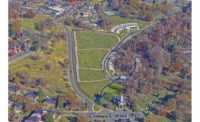The 606
Chicago
Best Project
Owner Chicago Park District
Lead Design Firm Collins Engineers Inc.
Contractor Walsh Construction
Architect Michael Van Valkenburgh Associates Inc.
Construction Management TranSystems Corp.
More than a large urban project, The 606 acts as a community connector. By repurposing existing, unused 20th-century infrastructure for 21st-century needs, the development brings together neighborhoods, improves access to bicycle networks, enhances ecological performance and creates a new city experience.
The $95-million project encompasses six ground-level parks connected by a 2.67-mile-long elevated multi-use path that occupies the former right-of-way of the Chicago, Milwaukee, St. Paul & Pacific Railroad, just a few miles northwest of downtown Chicago.
Crews contended with limited right-of-way and at-grade access to the elevated rail line by using creative solutions such as the implementation of linear construction staging to minimize conflicting work activities due to limited site access. A highly modified, machine-controlled, slip-form paver installed the 2.7-mile, 8-in.-thick concrete path.
Available space on the elevated trail was also tight. The 40-ft-wide space quickly became tighter with the addition of a 10-ft-wide concrete path, 4 ft of running/walking path, plantings and planting soil layers, infiltration basins with storm sewer lines, electrical utilities, fiber optic transmission lines, irrigation lines, light poles, benches, water fountains and security cameras. The team carefully layered each required infrastructure and made adjustments throughout design to ensure everything worked in a manner that made sense for both the final appearance of the park and also for future maintenance.
Combining the many different facets of the overall project into a cohesive plan also required extensive engineering. This included multi-use path geometric design, bridge inspection and design and rehabilitation of 38 bridges, including two new signature bridges and one recycled structure.
A highlight of the “reuse” theme was the removal, rehabilitation and eventual relocation of the 100-year-old Carnegie Steel Bridge. A self-propelled modular transporter (SPMT) allowed the bridge to be removed and transported 1.25 miles over city streets without being disassembled. State-of-the-art jacking techniques were utilized in conjunction with the SPMT equipment to safely and accurately lower and place the 80-ton bridge. These efforts also contributed cost and time savings to the overall project while minimizing traffic impacts to the surrounding community.
The project also involved the design and rehabilitation of six miles of retaining walls, structural design of six access ramps, drainage and hydrology of a new trail and park system and utility coordination.









Post a comment to this article
Report Abusive Comment